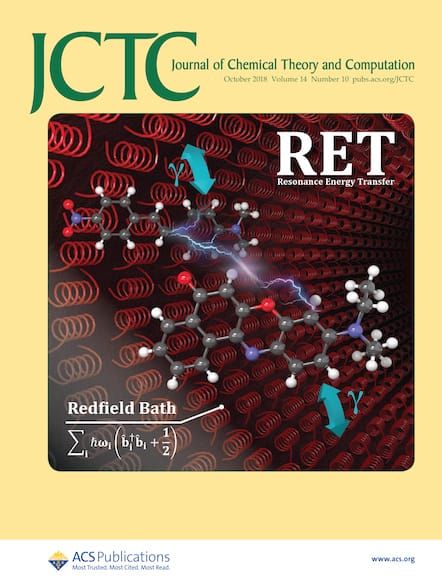一种能识别溶液中有机小分子的单层保护金纳米颗粒评分函数。
IF 5.5
1区 化学
Q2 CHEMISTRY, PHYSICAL
引用次数: 0
摘要
配体包覆的金纳米粒子(AuNPs)可以作为自组织纳米受体,能够选择性地识别溶液中的小有机分子(分析物)。这种能力可以应用于几个领域,核磁共振化学传感就是一个显著的例子。为了促进这种基于AuNP的纳米传感器的合理设计,我们提出了一个数据驱动的评分函数,以快速估计AuNP分析物的结合亲和力,从而实现配体包覆的AuNP传感器的快速硅预筛选。该评分函数将化学相似性、疏水性和电荷互补性作为关键的分子描述符,在实验数据验证后显示出出色的预测准确性(R2 = 0.85, MAE = 0.45 kcal/mol)。在代表性系统上增强的采样分子动力学表明,配体的柔韧性、单层填充和氢键对结合相互作用至关重要,特别是对于弱结合系统。总之,这些数据驱动和原子的见解为基于aunp的纳米传感器的合理设计和优化提供了一个强大的框架。本文章由计算机程序翻译,如有差异,请以英文原文为准。
A Scoring Function for Monolayer-Protected Gold Nanoparticles Capable of Recognizing Small Organic Molecules in Solution.
Ligand-coated gold nanoparticles (AuNPs) can act as self-organized nanoreceptors capable of selectively recognizing small organic molecules (analytes) in solution. This ability can be applied in several fields, with NMR chemosensing being a notable example. To advance the rational design of such AuNP-based nanosensors, we present a data-driven scoring function to rapidly estimate AuNP-analyte binding affinities, thus allowing fast in silico prescreening of ligand-coated AuNP sensors. This scoring function implements chemical similarity, hydrophobicity, and charge complementarity as key molecular descriptors, demonstrating excellent predictive accuracy when validated against experimental data (R2 = 0.85, MAE = 0.45 kcal/mol). Enhanced sampling molecular dynamics on representative systems revealed that ligand flexibility, monolayer packing, and hydrogen bonding critically shape binding interactions, particularly for weak binding systems. Together, these data-driven and atomistic insights offer a robust framework for the rational design and optimization of AuNP-based nanosensors.
求助全文
通过发布文献求助,成功后即可免费获取论文全文。
去求助
来源期刊

Journal of Chemical Theory and Computation
化学-物理:原子、分子和化学物理
CiteScore
9.90
自引率
16.40%
发文量
568
审稿时长
1 months
期刊介绍:
The Journal of Chemical Theory and Computation invites new and original contributions with the understanding that, if accepted, they will not be published elsewhere. Papers reporting new theories, methodology, and/or important applications in quantum electronic structure, molecular dynamics, and statistical mechanics are appropriate for submission to this Journal. Specific topics include advances in or applications of ab initio quantum mechanics, density functional theory, design and properties of new materials, surface science, Monte Carlo simulations, solvation models, QM/MM calculations, biomolecular structure prediction, and molecular dynamics in the broadest sense including gas-phase dynamics, ab initio dynamics, biomolecular dynamics, and protein folding. The Journal does not consider papers that are straightforward applications of known methods including DFT and molecular dynamics. The Journal favors submissions that include advances in theory or methodology with applications to compelling problems.
 求助内容:
求助内容: 应助结果提醒方式:
应助结果提醒方式:


